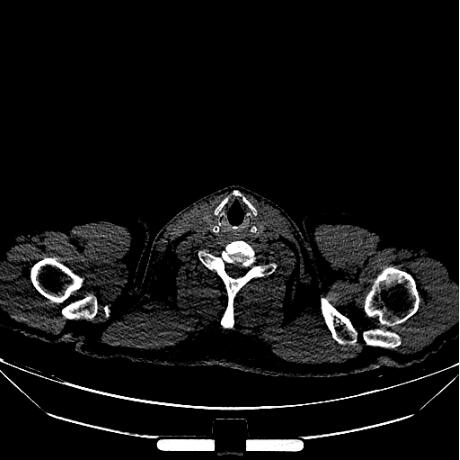Python通过TensorFlow卷积神经网络实现猫狗识别
这份数据集来源于Kaggle,数据集有12500只猫和12500只狗。在这里简单介绍下整体思路
- 处理数据
- 设计神经网络
- 进行训练测试
1. 数据处理
将图片数据处理为 tf 能够识别的数据格式,并将数据设计批次。
- 第一步
get_files()方法读取图片,然后根据图片名,添加猫狗 label,然后再将 image和label 放到 数组中,打乱顺序返回 - 将第一步处理好的图片 和label 数组 转化为 tensorflow 能够识别的格式,然后将图片裁剪和补充进行标准化处理,分批次返回。
新建数据处理文件 ,文件名 input_data.py
import tensorflow as tf
import os
import numpy as np
def get_files(file_dir):
cats = []
label_cats = []
dogs = []
label_dogs = []
for file in os.listdir(file_dir):
name = file.split(sep='.')
if 'cat' in name[0]:
cats.append(file_dir + file)
label_cats.append(0)
else:
if 'dog' in name[0]:
dogs.append(file_dir + file)
label_dogs.append(1)
image_list = np.hstack((cats,dogs))
label_list = np.hstack((label_cats,label_dogs))
# print('There are %d cats\nThere are %d dogs' %(len(cats), len(dogs)))
# 多个种类分别的时候需要把多个种类放在一起,打乱顺序,这里不需要
# 把标签和图片都放倒一个 temp 中 然后打乱顺序,然后取出来
temp = np.array([image_list,label_list])
temp = temp.transpose()
# 打乱顺序
np.random.shuffle(temp)
# 取出第一个元素作为 image 第二个元素作为 label
image_list = list(temp[:,0])
label_list = list(temp[:,1])
label_list = [int(i) for i in label_list]
return image_list,label_list
# 测试 get_files
# imgs , label = get_files('/Users/yangyibo/GitWork/pythonLean/AI/猫狗识别/testImg/')
# for i in imgs:
# print("img:",i)
# for i in label:
# print('label:',i)
# 测试 get_files end
# image_W ,image_H 指定图片大小,batch_size 每批读取的个数 ,capacity队列中 最多容纳元素的个数
def get_batch(image,label,image_W,image_H,batch_size,capacity):
# 转换数据为 ts 能识别的格式
image = tf.cast(image,tf.string)
label = tf.cast(label, tf.int32)
# 将image 和 label 放倒队列里
input_queue = tf.train.slice_input_producer([image,label])
label = input_queue[1]
# 读取图片的全部信息
image_contents = tf.read_file(input_queue[0])
# 把图片解码,channels =3 为彩色图片, r,g ,b 黑白图片为 1 ,也可以理解为图片的厚度
image = tf.image.decode_jpeg(image_contents,channels =3)
# 将图片以图片中心进行裁剪或者扩充为 指定的image_W,image_H
image = tf.image.resize_image_with_crop_or_pad(image, image_W, image_H)
# 对数据进行标准化,标准化,就是减去它的均值,除以他的方差
image = tf.image.per_image_standardization(image)
# 生成批次 num_threads 有多少个线程根据电脑配置设置 capacity 队列中 最多容纳图片的个数 tf.train.shuffle_batch 打乱顺序,
image_batch, label_batch = tf.train.batch([image, label],batch_size = batch_size, num_threads = 64, capacity = capacity)
# 重新定义下 label_batch 的形状
label_batch = tf.reshape(label_batch , [batch_size])
# 转化图片
image_batch = tf.cast(image_batch,tf.float32)
return image_batch, label_batch
# test get_batch
# import matplotlib.pyplot as plt
# BATCH_SIZE = 2
# CAPACITY = 256
# IMG_W = 208
# IMG_H = 208
# train_dir = '/Users/yangyibo/GitWork/pythonLean/AI/猫狗识别/testImg/'
# image_list, label_list = get_files(train_dir)
# image_batch, label_batch = get_batch(image_list, label_list, IMG_W, IMG_H, BATCH_SIZE, CAPACITY)
# with tf.Session() as sess:
# i = 0
# # Coordinator 和 start_queue_runners 监控 queue 的状态,不停的入队出队
# coord = tf.train.Coordinator()
# threads = tf.train.start_queue_runners(coord=coord)
# # coord.should_stop() 返回 true 时也就是 数据读完了应该调用 coord.request_stop()
# try:
# while not coord.should_stop() and i<1:
# # 测试一个步
# img, label = sess.run([image_batch, label_batch])
# for j in np.arange(BATCH_SIZE):
# print('label: %d' %label[j])
# # 因为是个4D 的数据所以第一个为 索引 其他的为冒号就行了
# plt.imshow(img[j,:,:,:])
# plt.show()
# i+=1
# # 队列中没有数据
# except tf.errors.OutOfRangeError:
# print('done!')
# finally:
# coord.request_stop()
# coord.join(threads)
# sess.close()
2. 设计神经网络
利用卷积神经网路处理,网络结构为
# conv1 卷积层 1 # pooling1_lrn 池化层 1 # conv2 卷积层 2 # pooling2_lrn 池化层 2 # local3 全连接层 1 # local4 全连接层 2 # softmax 全连接层 3
新建神经网络文件 ,文件名 model.py
#coding=utf-8
import tensorflow as tf
def inference(images, batch_size, n_classes):
with tf.variable_scope('conv1') as scope:
# 卷积盒的为 3*3 的卷积盒,图片厚度是3,输出是16个featuremap
weights = tf.get_variable('weights',
shape=[3, 3, 3, 16],
dtype=tf.float32,
initializer=tf.truncated_normal_initializer(stddev=0.1, dtype=tf.float32))
biases = tf.get_variable('biases',
shape=[16],
dtype=tf.float32,
initializer=tf.constant_initializer(0.1))
conv = tf.nn.conv2d(images, weights, strides=[1, 1, 1, 1], padding='SAME')
pre_activation = tf.nn.bias_add(conv, biases)
conv1 = tf.nn.relu(pre_activation, name=scope.name)
with tf.variable_scope('pooling1_lrn') as scope:
pool1 = tf.nn.max_pool(conv1, ksize=[1, 3, 3, 1], strides=[1, 2, 2, 1], padding='SAME', name='pooling1')
norm1 = tf.nn.lrn(pool1, depth_radius=4, bias=1.0, alpha=0.001 / 9.0, beta=0.75, name='norm1')
with tf.variable_scope('conv2') as scope:
weights = tf.get_variable('weights',
shape=[3, 3, 16, 16],
dtype=tf.float32,
initializer=tf.truncated_normal_initializer(stddev=0.1, dtype=tf.float32))
biases = tf.get_variable('biases',
shape=[16],
dtype=tf.float32,
initializer=tf.constant_initializer(0.1))
conv = tf.nn.conv2d(norm1, weights, strides=[1, 1, 1, 1], padding='SAME')
pre_activation = tf.nn.bias_add(conv, biases)
conv2 = tf.nn.relu(pre_activation, name='conv2')
# pool2 and norm2
with tf.variable_scope('pooling2_lrn') as scope:
norm2 = tf.nn.lrn(conv2, depth_radius=4, bias=1.0, alpha=0.001 / 9.0, beta=0.75, name='norm2')
pool2 = tf.nn.max_pool(norm2, ksize=[1, 3, 3, 1], strides=[1, 1, 1, 1], padding='SAME', name='pooling2')
with tf.variable_scope('local3') as scope:
reshape = tf.reshape(pool2, shape=[batch_size, -1])
dim = reshape.get_shape()[1].value
weights = tf.get_variable('weights',
shape=[dim, 128],
dtype=tf.float32,
initializer=tf.truncated_normal_initializer(stddev=0.005, dtype=tf.float32))
biases = tf.get_variable('biases',
shape=[128],
dtype=tf.float32,
initializer=tf.constant_initializer(0.1))
local3 = tf.nn.relu(tf.matmul(reshape, weights) + biases, name=scope.name)
# local4
with tf.variable_scope('local4') as scope:
weights = tf.get_variable('weights',
shape=[128, 128],
dtype=tf.float32,
initializer=tf.truncated_normal_initializer(stddev=0.005, dtype=tf.float32))
biases = tf.get_variable('biases',
shape=[128],
dtype=tf.float32,
initializer=tf.constant_initializer(0.1))
local4 = tf.nn.relu(tf.matmul(local3, weights) + biases, name='local4')
# softmax
with tf.variable_scope('softmax_linear') as scope:
weights = tf.get_variable('softmax_linear',
shape=[128, n_classes],
dtype=tf.float32,
initializer=tf.truncated_normal_initializer(stddev=0.005, dtype=tf.float32))
biases = tf.get_variable('biases',
shape=[n_classes],
dtype=tf.float32,
initializer=tf.constant_initializer(0.1))
softmax_linear = tf.add(tf.matmul(local4, weights), biases, name='softmax_linear')
return softmax_linear
def losses(logits, labels):
with tf.variable_scope('loss') as scope:
cross_entropy = tf.nn.sparse_softmax_cross_entropy_with_logits \
(logits=logits, labels=labels, name='xentropy_per_example')
loss = tf.reduce_mean(cross_entropy, name='loss')
tf.summary.scalar(scope.name + '/loss', loss)
return loss
def trainning(loss, learning_rate):
with tf.name_scope('optimizer'):
optimizer = tf.train.AdamOptimizer(learning_rate= learning_rate)
global_step = tf.Variable(0, name='global_step', trainable=False)
train_op = optimizer.minimize(loss, global_step= global_step)
return train_op
def evaluation(logits, labels):
with tf.variable_scope('accuracy') as scope:
correct = tf.nn.in_top_k(logits, labels, 1)
correct = tf.cast(correct, tf.float16)
accuracy = tf.reduce_mean(correct)
tf.summary.scalar(scope.name + '/accuracy', accuracy)
return accuracy
3. 训练数据,并将训练的模型存储
import os
import numpy as np
import tensorflow as tf
import input_data
import model
N_CLASSES = 2 # 2个输出神经元,[1,0] 或者 [0,1]猫和狗的概率
IMG_W = 208 # 重新定义图片的大小,图片如果过大则训练比较慢
IMG_H = 208
BATCH_SIZE = 32 #每批数据的大小
CAPACITY = 256
MAX_STEP = 15000 # 训练的步数,应当 >= 10000
learning_rate = 0.0001 # 学习率,建议刚开始的 learning_rate <= 0.0001
def run_training():
# 数据集
train_dir = '/Users/yangyibo/GitWork/pythonLean/AI/猫狗识别/img/' #My dir--20170727-csq
#logs_train_dir 存放训练模型的过程的数据,在tensorboard 中查看
logs_train_dir = '/Users/yangyibo/GitWork/pythonLean/AI/猫狗识别/saveNet/'
# 获取图片和标签集
train, train_label = input_data.get_files(train_dir)
# 生成批次
train_batch, train_label_batch = input_data.get_batch(train,
train_label,
IMG_W,
IMG_H,
BATCH_SIZE,
CAPACITY)
# 进入模型
train_logits = model.inference(train_batch, BATCH_SIZE, N_CLASSES)
# 获取 loss
train_loss = model.losses(train_logits, train_label_batch)
# 训练
train_op = model.trainning(train_loss, learning_rate)
# 获取准确率
train__acc = model.evaluation(train_logits, train_label_batch)
# 合并 summary
summary_op = tf.summary.merge_all()
sess = tf.Session()
# 保存summary
train_writer = tf.summary.FileWriter(logs_train_dir, sess.graph)
saver = tf.train.Saver()
sess.run(tf.global_variables_initializer())
coord = tf.train.Coordinator()
threads = tf.train.start_queue_runners(sess=sess, coord=coord)
try:
for step in np.arange(MAX_STEP):
if coord.should_stop():
break
_, tra_loss, tra_acc = sess.run([train_op, train_loss, train__acc])
if step % 50 == 0:
print('Step %d, train loss = %.2f, train accuracy = %.2f%%' %(step, tra_loss, tra_acc*100.0))
summary_str = sess.run(summary_op)
train_writer.add_summary(summary_str, step)
if step % 2000 == 0 or (step + 1) == MAX_STEP:
# 每隔2000步保存一下模型,模型保存在 checkpoint_path 中
checkpoint_path = os.path.join(logs_train_dir, 'model.ckpt')
saver.save(sess, checkpoint_path, global_step=step)
except tf.errors.OutOfRangeError:
print('Done training -- epoch limit reached')
finally:
coord.request_stop()
coord.join(threads)
sess.close()
# train
run_training()
关于保存的模型怎么使用将在下一篇文章中展示。
TensorFlow 卷积神经网络之使用训练好的模型识别猫狗图片
如果需要训练数据集可以评论留下联系方式。
原文完整代码地址:
https://github.com/527515025/My-TensorFlow-tutorials/tree/master/猫狗识别
欢迎 star 欢迎提问。
总结
以上就是这篇文章的全部内容了,希望本文的内容对大家的学习或者工作具有一定的参考学习价值,谢谢大家对【听图阁-专注于Python设计】的支持。如果你想了解更多相关内容请查看下面相关链接



